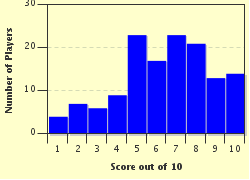Quiz Answer Key and Fun Facts
1. Which Archbishop of Canterbury guided Edward VI in religious affairs after Henry VIII died?
2. What religious work, still used in the Anglican Communion today, was first published during the reign of Edward VI?
3. Mary I made an attempt to reunite England with the Catholic Church, earning which nickname in history?
4. At the age of thirty-seven Mary I united in marriage with which king, in an attempt to block her Protestant sister, Elizabeth, from taking the throne of England?
5. It isn't surprising that, as Queen of England, Elizabeth I moved the Church in a more Protestant direction.
6. What was the name of the Act of Parliament passed in Elizabeth I's reign, which forced attendance of Sunday service in an Anglican Church?
7. The Puritan extremists in England, those who believed that the Church of England was still too "popish" after the reforms of Elizabeth I, included the followers of which Reformation figure?
8. Eventually convinced that Satan was operating in their midst in England, a group of Puritans decided to emigrate to New England, under the guidance of which man, who became the second governor of Massachusetts Bay Colony?
9. Religious reformers who sought a complete break with the Church of England, those who were viewed as radical Puritans, were called?
10. In 1608, the Pilgrims, one of the best known groups of radical Puritans, decided to escape persecution in England and emigrated to which country?
Source: Author
ponycargirl
This quiz was reviewed by FunTrivia editor
bloomsby before going online.
Any errors found in FunTrivia content are routinely corrected through our feedback system.

